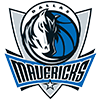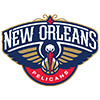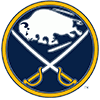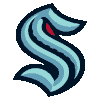For the third year in a row, I will be going division by division, providing analysis on every fantasy-relevant prospect in baseball while also ranking those prospects in their respective systems. This means there will be 20-plus prospects ranked in certain systems and less than 10 prospects ranked in others. There is no point in listing an irrelevant prospect just to reach an arbitrary total of 10, 20 or 30. Similarly, it is unfortunate to not include information on highly relevant prospects just because that prospect was not one of his team's 10 or 20 best.
The fourth installment takes us to the 90 prospects you need to know in the National League East.
I wrote the outlooks for most of the guys in the top 250 or so of the top 400 prospect rankings, so if you want more in depth analysis on someone, check out their player profile. Feel free to ask me any prospect-related questions in the comments section or on Twitter.
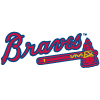 BRAVES
BRAVES
This system is not as deep as it has been in recent years, but Atlanta is still tied with the Padres for the most pitching prospects in the top 100 (five). It is possible that six of the top 11 graduate this year, which would leave this system in a rough spot, but that would also mean the big-league roster was as loaded as it has been in over a decade.
1. Austin Riley, 3B/OF, 21, Triple-A
This mammo brought to you
For the third year in a row, I will be going division by division, providing analysis on every fantasy-relevant prospect in baseball while also ranking those prospects in their respective systems. This means there will be 20-plus prospects ranked in certain systems and less than 10 prospects ranked in others. There is no point in listing an irrelevant prospect just to reach an arbitrary total of 10, 20 or 30. Similarly, it is unfortunate to not include information on highly relevant prospects just because that prospect was not one of his team's 10 or 20 best.
The fourth installment takes us to the 90 prospects you need to know in the National League East.
I wrote the outlooks for most of the guys in the top 250 or so of the top 400 prospect rankings, so if you want more in depth analysis on someone, check out their player profile. Feel free to ask me any prospect-related questions in the comments section or on Twitter.
 BRAVES
BRAVES
This system is not as deep as it has been in recent years, but Atlanta is still tied with the Padres for the most pitching prospects in the top 100 (five). It is possible that six of the top 11 graduate this year, which would leave this system in a rough spot, but that would also mean the big-league roster was as loaded as it has been in over a decade.
1. Austin Riley, 3B/OF, 21, Triple-A
This mammo brought to you courtesy of Austin Riley 💪#BravesST | #ChopOnpic.twitter.com/FdsHsUwReQ
— Atlanta Braves (@Braves) March 2, 2018
The Josh Donaldson signing may be a factor in delaying Riley's big-league debut, but it does not have a negative effect on his dynasty-league value. He raked at Triple-A down the stretch last year but was striking out a lot and hardly walking over that stretch. More seasoning in the minors will give him a better chance to have initial success when he does reach the majors. He will likely get work in the outfield this spring.
2. Mike Soroka, RHP, 21, Triple-A
Look at the drop on this Mike Soroka fastball at 95mph.It's stupid. pic.twitter.com/81BjzmNrHm
— Pitcher List (@PitcherList) May 2, 2018
Were it not for a bout with shoulder inflammation that cut short his debut season, Soroka's ADP would likely be very similar to Shane Bieber's in redraft leagues. The Braves have been very cautious with Soroka since the injury popped up, and he is expected to be handled with kid gloves during spring training. When fresh and healthy, Soroka should slot into the big-league rotation, but he will likely be sent back to Triple-A to knock some rust off and wait his turn.
3. Ian Anderson, RHP, 20, Double-A
Anderson combines a nice mix of frontline upside and a realistic mid-rotation floor. He has an athletic delivery, mid-90s fastball and plus bender. To max out he will need to continue to improve his changeup and become more consistent with his fastball command.
4. Touki Toussaint, RHP, 22, MLB
2018 Best Strikeout Reactions by a Duet:Touki Toussaint and Marcell Ozunapic.twitter.com/qfyGITog8Y
— Rob Friedman (@PitchingNinja) December 11, 2018
I'm still not sure whether he is a starter or reliever long term, but he will provide fantasy value regardless. For just 2019, however, I think it's safe to say he will be a ratio risk as the Braves continue to develop him as a starter. Toussaint should head to spring training as the favorite to win the fifth starter's spot, but there are a handful of talented arms who will be ready to slot in if he is struggling to be effective.
5. Drew Waters, OF, 20, High-A
I'm a Drew Waters fan. This is a home run. Short, simple stroke with carrying power to all fields from an athletic frame. He barreled up everything tonight. pic.twitter.com/7rqTuXr8Zp
— David Lee (@David11Lee) May 26, 2018
Waters has always had 20/20 upside, and showed last year that he has the potential to hit for a high average as well. He is pretty aggressive, and may struggle to post much better than a .330 OBP without becoming a more selective hitter.
6. Bryse Wilson, RHP, 21, Triple-A
When you strike out the first two batters of your career, your family is going to make some noise. @Braves rookie Bryse Wilson introduces himself to big-league hitters. pic.twitter.com/fKq3vSMYQY
— FOX Sports South (@FOXSportsSouth) August 20, 2018
I love watching Wilson pitch. He works quickly and is intimidating as hell. His fastball is a beast, and if his secondaries can improve at the rate one would expect for a pitcher who didn't turn 21 until December, he has a chance to be a No. 2 starter.
7. Kyle Wright, RHP, 23, Triple-A
Wright is close to big-league ready and has SP3 or SP4 upside, thanks to his ability to generate groundballs at a high clip, which should help him post quality ratios to make up for his average strikeout rate. He should join the Braves' rotation this summer.
8. Cristian Pache, OF, 20, Double-A
"He's a potential 70-grade defender in center field, where every aspect of his defense is an asset."#Braves human highlight reel Cristian Pache, who may be #MLB's best defensive prospect, anchors on our All-Defense Team: https://t.co/0nDLRqe3S4pic.twitter.com/ia1pVPX7QI
— MLB Pipeline (@MLBPipeline) January 14, 2019
Most of the things that make Pache a good real-life prospect (80-grade CF defense, 70-grade arm) have very little to do with fantasy value. Even his 70-grade speed doesn't translate as well as we would hope on the bases. I would cash him out now if I could get a top-100 prospect back.
9. William Contreras, C, 21, High-A
William Contreras, the younger brother of #Cubs catcher Willson, just missed our list of #MLB's Top 10 catching prospects, and he's the #Braves' top prospect not on our Top 100 list. Here's a look at each team's best non-Top 100 prospect: https://t.co/1fNOaIdEpTpic.twitter.com/KqTy4aHC4i
— MLB Pipeline (@MLBPipeline) February 1, 2019
Like Pache, Contreras is more valuable in real life than in fantasy, but he still has a chance to develop into a borderline top-10 fantasy catcher. The younger brother of Willson Contreras, William has a very similar overall skill set. He should finish the year at Double-A.
10. Luiz Gohara, LHP, 22, Triple-A
A year ago, Gohara was a top-50 prospect who was expected to make an impact in the big-league rotation – quite similar to the way Josh James of the Astros is being valued right now. However, minor injuries and a personal issue prevented him from ever getting on track, and now his future role is uncertain. It's possible he comes to camp dedicated to re-establishing himself as a part of the team's long-term rotation plans, but he will really need to impress this year to avoid being shifted to the bullpen.
11. Joey Wentz, LHP, 21, Double-A
An oblique injury limited Wentz to 67 innings last year and prevented him from reaching Double-A before his 21st birthday. He has a quality three-pitch mix and could see gains to his command and fastball velocity as he inches closer to a big-league debut, likely in 2020.
12. Greyson Jenista, OF, 22, High-A
The Braves selected Jenista out of Wichita State in the second round and awarded him a $1.2 million bonus. A big (6-foot-4, 210 pounds) corner outfielder who is power-over-hit and bat-over-glove, Jenista will need to do a lot of damage offensively as he marches toward the major leagues in order to profile as an everyday player.
13. Kyle Muller, LHP, 21, Double-A
Muller has a starter's frame (6-foot-6, 225 pounds) and a three-pitch mix to match. His ceiling is likely capped as a No. 3 starter, as none of his pitches are true monsters and he doesn't project to develop better than average command.
14. Huascar Ynoa, RHP, 20, High-A
Ynoa has electric stuff and shaky command, which leads to many evaluators projecting him to the bullpen long term. That said, he is not so different than Toussaint was a year ago, and the Braves will obviously continue to develop him as a starter for now. Ynoa has a chance to lead the minor-league pitchers in this system in strikeouts in 2019.
15. CJ Alexander, 3B, 22, High-A
Alexander only received $125,000 when the Braves grabbed him in the 20th round last year, but he turned heads in his debut. He is not a particularly good defender at third base, but if he is able to hit for average and for power, he could make it work. While he finished 2018 having success in a small sample at High-A, it's possible that the Braves could send him to Low-A, just to make sure he gets off to a good start.
16. Kolby Allard, LHP, 21, Triple-A
We probably should have seen this coming. There are a couple notable exceptions (Zack Greinke, Kyle Hendricks), but it is typically very difficult for a starting pitcher to have success in the major leagues with below-average velocity. Allard also happens to find himself in an organization that is loaded with pitchers with more upside, so it's difficult to see how he fits into the Braves' long-term plans.
17. Patrick Weigel, RHP, 24, Double-A
Weigel appeared to be tracking toward a big-league debut before he tore his UCL and needed Tommy John surgery in June of 2017. He will be a full go this spring, but with the crowded rotation at Triple-A, it may make sense to just let him ease back into things against Double-A hitters. When healthy, Weigel's stuff was electric but his command was shaky, and given the Braves' pitching depth, I think he may end up in the bullpen if he is not used in a trade this summer.
18. Trey Riley, RHP, 20, Appalachian League
Riley, a juco product, received a $450,000 bonus in the fifth round last year. He has a plus fastball and plus slider, but has shaky command and his curveball and changeup are still works in progress. If he starts throwing consistent strikes and can stay healthy in his first full season, he could jump to the middle of this list.
19. AJ Graffanino, SS, 21, High-A
Graffanino (eighth-round pick in 2018) is a quality defender at shortstop and he made contact at a high clip in his pro debut. That's his game – putting the ball in play and hoping for the best. The best-case scenario is that he hits for an empty high average and steals 15 bases per year.
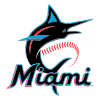 MARLINS
MARLINS
For a team that hasn't even attempted to compete in over a calendar year and has traded away a former MVP and current MVP along with the game's best catcher and another middle-of-the-order hitter, this rebuild has been a complete disaster. Miami has two top-100 prospects and then there is a gigantic dropoff until their third-best prospect. This system is trending up, as the top prospects won't graduate anytime soon and they will be picking in the top three for the foreseeable future, but make no mistake, this has been a complete failure to date.
1. Victor Victor Mesa, OF, 22, High-A
#Marlins No. 1 prospect Victor Victor Mesa taking some swings at hitters camp. pic.twitter.com/Qw0Dfonct7
— Wells Dusenbury (@DuseReport) January 14, 2019
I usually fade high-profile Cuban hitters because the hit tool rarely seems to translate, but I like Victor Victor's bloodlines and intangibles (he really wants to be great), so I'm in on him. He could move quickly and has a chance to hit for a high average while banging out 15 home runs and stealing 30-plus bases.
2. Sixto Sanchez, RHP, 20, High-A
Here is some straight #nasty 🔥 from Sixto Sanchez last night. pic.twitter.com/ipKf24qbzI
— Jason Woodell (@JasonAtTheGame) May 6, 2018
This may seem unfair or heartless to say, but Tommy John surgery for Sanchez before he reaches the big leagues seems more likely than not at this point. He elicits hyperbolic scouting reports, and could be an ace in the big leagues, so while the risk is very high, the upside is right there with it.
3. Monte Harrison, OF, 23, Triple-A
With this solo home run and a double yesterday, Monte Harrison is having his best month this season, sporting a .263/.311/.561 line. Harrison is the #Marlins' No. 1 prospect and @MLB's No. 78. More: https://t.co/3R34hziS7spic.twitter.com/E0ACFuyxDy
— MLB Pipeline (@MLBPipeline) August 18, 2018
Harrison's K-rate jumped from 27 percent in 2017 to 37 percent in 2018 after getting the bump to Double-A. If that is what Harrison is, he won't be a factor in the big leagues. However, if he can make some adjustments and cut his strikeouts to a more manageable 28 or 30 percent, then his power and speed would be appealing in all formats. If he were a league-average hitter in the big leagues, it could translate into a 30/30 season, but that seems very unlikely at this point.
4. Isan Diaz, 2B/SS, 22, Triple-A
Diaz benefits from being in this system, as his path to an audition in an everyday role is clear. He will probably be a batting average drain, but he has plus raw power and can get on base at a passable clip. The Marlins may also give him the green light on the bases early on, even though he lacks plus speed.
5. Tristan Pompey, OF, 22, High-A
Pompey's LF-only defensive profile resulted in him falling to the 89th overall pick of the 2018 draft. He has enough offensive upside to someday profile as an everyday left fielder and advanced three levels all the way to High-A after signing. He is more valuable in OBP and points leagues.
6. Nick Neidert, RHP, 22, Triple-A
Neidert is not as good as his numbers at Double-A indicate. What he has is potentially plus command and a plus changeup, which is enough for any pitcher with a passable fastball to have success against minor-league hitters. However, in order for that approach to work in the big leagues, his command and pitch tunnelling need to be elite to make up for his fringe-average fastball.
7. Trevor Rogers, LHP, 21, High-A
The simple fact that Rogers has not undergone Tommy John surgery might be considered a success for Miami, who selected prep pitchers Tyler Kolek and Braxton Garrett in previous first rounds only to then lose those pitchers immediately to torn UCLs. Rogers did not pitch after being selected with the 13th overall pick in 2017, but made 17 starts at Low-A last year. He has a plus fastball but the rest of his repertoire is still a work in progress.
8. Connor Scott, OF, 19, Low-A
Scott received $4.0382 million after the Marlins selected him with the 13th overall pick last year, but he struggled with the bat in rookie ball and a 23-game run at Low-A. Strikeouts are an issue for the long-limbed 6-foot-4 outfielder, but his plus-plus speed would be incredibly valuable if he hits. I just don't think he's going to hit.
9. Osiris Johnson, SS/2B, 18, Low-A
Johnson has an appealing combination of plus power and plus speed, but like Scott, it's quite possible he never hits enough for his tools to matter. Age is on his side, however, as he was one of the youngest players in the 2018 draft. He could rapidly climb the top 400 if he hits.
10. Brian Miller, OF, 23, Double-A
In most organizations, Miller would comfortably project as a fourth or fifth outfielder who offers 70-grade speed off the bench. For the Marlins, however, he could get a year or two as an everyday player, which could translate into 25-plus steals in a season. He needs to prove he can hit upper-level pitching to get that chance.
11. Braxton Garrett, LHP, 21, Low-A
The No. 7 overall pick in 2016, Garrett underwent Tommy John surgery in June of 2017 and has logged just 15.1 total innings in pro ball. He will be pitching in spring training and will likely get assigned to Low-A to start the year. He had No. 2/3 starter upside as an amateur, and could still get there.
12. Sandy Alcantara, RHP, 23, Triple-A
The Cardinals knew what they were doing when they flipped Alcantara to Miami as the headliner in the Marcell Ozuna trade. He has a big fastball, decent secondaries and a good frame, but throwing strikes has been a big issue in the upper levels. He will be in the mix for a rotation spot this spring, but would need to really impress to beat out some lower-ceiling/higher-floor options ahead of him.
13. Edward Cabrera, RHP, 20, High-A
A 6-foot-4, 175-pound righty with a monster fastball, Cabrera could develop into a No. 2 starter if his secondary pitches and command improve significantly on his march to the big leagues. He is very similar now to what Alcantara was a couple of years ago.
14. Jorge Guzman, RHP, 23, Double-A
Guzman has an even better fastball than Cabrera and slightly worse secondary offerings. While his numbers at High-A weren't great last year, it should be noted that he jumped over Low-A completely. Even in an organization as talent poor as the Marlins, Guzman likely fits best in the bullpen long term.
15. Jordan Yamamoto, RHP, 22, Double-A
Yamamoto is like a poor man's Neidert, which is to say he is shorter (six foot) and has a similarly mediocre fastball (90 mph) yet lacks Neidert's plus command and plus changeup. He also lacks projection, so don't expect him to add enough velocity to perform like a mid-rotation starter in the majors.
16. Austin Dean, OF, 25, MLB
As a big-league ready fifth outfielder, Dean would be a 40-man roster casualty in some organizations, but for Miami that could equate to a run of steady work in 2019. Dean could hit .265 or .270 with 10-to-15 home runs over a full season.
17. Jose Devers, SS, 19, High-A
Devers is a good athlete with plus speed who should be able to stick at shortstop, but the rest of his profile leaves a lot to be desired. He does not hit for power and has not yet proven he can hit for a high enough average to make up for the rest of his offensive shortcomings. Part of the problem is that Devers just hits the ball on the ground way too much.
18. Davis Bradshaw, OF, 20, Low-A
An athletic 6-foot-3 outfielder with plus speed, Bradshaw received $125,000 when the Marlins selected him out of junior college in the 11th round last year. He will need to get the ball in the air more in order to do enough with the bat to be a regular, but there is definitely fantasy upside here.
19. Christopher Torres, 2B/SS, 21, High-A
Torres, a high-pedigree J-2 signee by the Mariners back in 2014, was sent to Miami in the Dee Gordon trade last offseason. He is a plus runner who should be able to handle second base. He has good on-base skills, but also strikes out quite a bit without doing much damage when he does connect.
20. Victor Mesa Jr., OF, 17, Dominican Summer League
In all honesty, Mesa wouldn't be listed here if not for his bloodlines, but bloodlines matter, and so does name value in dynasty leagues. Unlike big brother Victor Victor, Mesa Jr. is not a plus runner, but if he has success in the DSL, he will likely be scooped up in deeper leagues.
21. James Nelson, 3B, 21, High-A
Nelson could never get going in 2018 as he was slowed by nagging injuries. He has the offensive upside to regain a spot in the top 10 of this list, but last seasons's struggles really hurt his stock. He doesn't walk much, so he really needs to do more damage on contact this year.
22. Jordan Holloway, RHP, 22, High-A
Holloway missed some of 2017 and almost all of 2018 recovering from Tommy John surgery. He is similar to Cabrera and Guzman, armed with a big fastball but with a lot of characteristics that tend to force guys into the bullpen long term. However, if he is throwing strikes and having success early this year, he could become a trendy waiver add in deeper leagues.
23. Thomas Jones, OF, 21, Low-A
After Harrison, Jones has the best tools in this system, but as expected, he has really struggled to hit enough for his tools to matter. This will probably be his last year on this list if he doesn't show signs of improvement.
24. Zac Gallen, RHP, 23, Triple-A
In Gallen, the Marlins have a big-league-ready No. 5 starter, who figures to get a long look at some point this season. I would not recommend deploying him in any format right away, as he has a low-90s fastball and lacks a plus offspeed pitch.
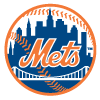 METS
METS
The Mets' top-five position players stack up with the top-five position players in most systems – particularly in terms of upside. However, things get rough after that. They have several high-risk pitching prospects of note and some recent international signees who could pop. Given their win-now trades this offseason, it wouldn't be surprising if this system gets worse in a hurry, as Alonso should graduate and they could deal another top guy or two at the deadline.
1. Peter Alonso, 1B, 24, Triple-A
In 2018, #Mets' Peter Alonso hit an @MiLB-best 36 homers, a league-leading 6 more in the @MLBazFallLeague and one in the #FuturesGame that nearly short-circuited #statcast. The slugger is No. 1 on our list of #MLB's Top 10 1B prospects: https://t.co/Y3oH6namecpic.twitter.com/i6998aLcwx
— MLB Pipeline (@MLBPipeline) January 18, 2019
He is the third wheel of the likely mid-to-late April call-ups, but unlike Vlad Guerrero Jr. or Eloy Jimenez, Alonso will likely hit below .250 in his first MLB season. However, he could still hit 30 home runs this year if he stays healthy, so he should have value in all formats once he is up.
2. Andres Gimenez, 2B/SS, 20, Double-A
Mets SS Andres Gimenez - Has struggled this fall and looked overmatched. athleticism still evident. Wide base. Hands start high then settle to slot at shoulders. Aesthetically pleasing, fluid swing. Minimal stride, lower body use. Great hands. Good balance. Slight uppercut path pic.twitter.com/IX5VqWbGR0
— Prospects Live (@ProspectsLive) November 7, 2018
Gimenez seems a little overrated in dynasty leagues, largely because his minor-league stolen-base totals oversell how fast he is. He could hit around .280 with 12-plus home runs and roughly 20 steals, which is a great fantasy contributor at shortstop, but that's the realistic ceiling.
3. Mark Vientos, 3B, 19, Low-A
Mark Vientos with a LOUD double off the left field wall. #Metspic.twitter.com/DWZlxg8hkx
— Josh Norris (@jnorris427) July 28, 2018
What Vientos did in the Appy League last year has somehow flown under the radar. He really improved his approach and still got to plus power in games. This is what a future middle-of-the-order third baseman looks like before making his full-season debut.
4. Ronny Mauricio, SS, New York-Penn League
Would you like to see a few of #Mets prospect Ronny Mauricio's best swings today? Here you go. pic.twitter.com/GjCtVVSYqw
— Josh Norris (@jnorris427) July 21, 2018
While fellow 2017 J-2 signees like Wander Franco, Kristian Robinson and D'Shawn Knowles have started putting their tools to work in games, Mauricio is still almost all projection. That said, he has Manny Machado-esque offensive upside if he fills out as expected and reaches his potential.
5. Shervyen Newton, 3B/2B/SS, 19, Low-A
Newton might be one of the most slept on sluggers in the lower levels of the minors. He has 70-grade raw power and an extremely patient approach, which already makes him a top-100 prospect in OBP leagues. If he can cut down on the strikeouts, he could shoot up lists.
6. David Peterson, LHP, 23, Double-A
Peterson is probably just going to just be a No. 4 starter, but I think there's a chance he overshoots that widespread projection. First, he is one of the best groundball generators on the planet. Second, he has good command and control with a deep repertoire. He will probably never average a strikeout per inning, but I think he will be effective.
7. Simeon Woods-Richardson, RHP, 18, New York-Penn League
Woods-Richardson is like the anti-Peterson. He has a plus fastball and a chance to develop a couple plus offspeed pitches. He is also a long way from the majors and comes with immense risk. The fact that he probably won't make his 2019 debut until short-season leagues open makes me less willing to stash him in RDI-sized dynasty leagues.
8. Adrian Hernandez, OF, 18, Gulf Coast League
Hernandez, a physical, toolsy outfielder, received $1.5 million on July 2, 2017. He has 20/20 upside and displayed good contact skills and a quality batted-ball profile in the DSL. He is unowned in many dynasty leagues, but that will change if he has significant success in his stateside debut.
9. Thomas Szapucki, LHP, 22, Low-A
Szapucki underwent Tommy John surgery in July of 2017, which wiped out his entire 2018 campaign. His fastball/curveball combo will be enough for him to have success in a high-leverage relief role, but if his changeup and command improve in the coming years, he could be a No. 2 starter. Look for him to head to Low-A to knock some rust off before spending most of the year at High-A.
10. Anthony Kay, LHP, 24, Double-A
The Mets selected Kay with the 31st overall pick in the 2016 draft, but he underwent Tommy John surgery that October and did not make his pro debut until April of 2018. He was seen as a potential mid-rotation starter when he was drafted, but his ceiling has actually risen since returning to the mound, flashing the potential for three plus pitches. If his command improves in his second full season, he could finish the year as a top-150 prospect.
11. Jaylen Palmer, 3B/SS, 18, Appalachian League
Palmer received $200,000 in the 22nd round of the 2018 draft. He is a good athlete and performed well in the GCL, but he will need to cut down on the strikeouts against more advanced pitching.
12. Francisco Alvarez, C, 17, Dominican Summer League
Alvarez received $2.7 million on July 2, 2018 and was touted as the catcher with the most raw power in that international signing class, which is high praise as there were several other backstops who received seven-figure bonuses. He will be a slow mover but is a name to remember if he starts producing when he reaches the GCL and Appy League.
13. William Lugo, 3B, 17, Gulf Coast League
While Lugo only received $475,000 as part of the Mets' 2018 international class, he has a very advanced offensive skill set and could turn heads in his pro debut. He is already 6-foot-3, 215 pounds, so he will need to be diligent with his diet and conditioning in the coming years.
14. Franklyn Kilome, RHP, 23, Rehabbing TJS (October 2018)
Shipped within the division from the Phillies in the Asdrubal Cabrera trade at the deadline, Kilome had stalled out a bit as a prospect, but his performance really improved after the trade. Unfortunately, just as he was re-establishing himself as a legitimate prospect, he suffered a torn UCL and needed Tommy John surgery in October. We won't see him until 2020, and this setback only increases the chances of him ending up in the bullpen long term.
15. Will Toffey, 3B, 24, Triple-A
Toffey, who was traded to the Mets from Oakland in the Jeurys Familia trade, has a chance to be a solid defensive third baseman who gets on base enough to be a big-league regular, although his batting average won't be particularly high. He has 50-grade raw power.
16. Junior Santos, RHP, 17, Gulf Coast League
At 6-foot-8, 218 pounds, Santos figures to fill out as one of the biggest pitching prospects in the minors in the coming years. This obviously leads to speculation that his above-average fastball will develop into a monster pitch. Given his size, it is all the more impressive that he walked just six batters in 50 innings in his pro debut.
17. Freddy Valdez, OF, 17, Dominican Summer League
Valdez signed with the Mets for $1.45 million during the 2018 J-2 period, and while he has significant fantasy upside, he is quite raw and probably won't make his stateside debut until 2020. He is already 6-foot-3, 210 pounds, so while he has significant power upside, he will need to keep his weight in check.
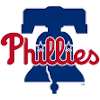 PHILLIES
PHILLIES
This system wasn't in great shape even before Sixto Sanchez was traded to Miami. There are a handful of interesting guys, to be sure, but the players with significant upside also have a ton of risk, and there aren't a lot of high-floor guys either. The argument could be made that no team (with the obvious exception of the Marlins) has done less with more in the draft in recent years. Philadelphia had the 10th pick in 2015 (Cornelius Randolph), 1st pick in 2016 (Mickey Moniak), 8th pick in 2017 (Adam Haseley) and the 3rd pick in 2018 (Alec Bohm). The jury is still out on those last three guys, but it's possible that they get zero everyday players out of those four picks.
1. Adam Haseley, OF, 22, Double-A
Will the power come? Has it already come? We don't know yet, but he was an excellent hitter after his promotion to Double-A. He doesn't strike out much and his approach is almost too good (he could probably stand to pull the ball more). If the power comes, he will be really good, and he's not too bad as is. Let's just hope the Phillies don't sign Bryce Harper.
2. Adonis Medina, RHP, 22, Double-A
Filthy cold Medina!Look at this pitch from #Phillies No. 2 prospect Adonis Medina in today's #FuturesGame. https://t.co/MRwrPasLmVpic.twitter.com/MayBJPN3Pn
— MLB Pipeline (@MLBPipeline) July 16, 2018
When Medina is on, his stuff is tantalizing to the point that he profiles as a frontline starter. However, there are concerns about his ability to hold up under a big-league starter's workload. He could be a No. 2 starter who averages 160-170 innings or a lights-out closer.
3. Luis Garcia, SS, 18, Low-A
#Phillies SS Luis Garcia hits a missle past #BlueJaysJordan Groshans for a stand-up 2B. Athletic switch hitter, good bat speed, barrel control. May grow into double digits HR power. pic.twitter.com/9hS6ZJwLFY
— Jason Woodell (@JasonAtTheGame) August 7, 2018
Sometimes I stumble upon a production comp when researching a prospect and it just clicks. This happened with Garcia – I think his realistic ceiling is Jean Segura. Of course, if that's the ceiling, he needs to get there, otherwise the fantasy production won't be all that special.
4. Alec Bohm, 1B/3B, 22, Low-A
I don't mind taking a flyer on R/R corner guys when the acquisition cost is next to nothing (picking Rhys Hoskins up off waivers in 2015, for instance). But if you draft Bohm in your FYPD, he better hit a ton, because if he doesn't the bat won't play down the defensive spectrum.
5. Francisco Morales, RHP, 19, Low-A
Third strikeout of the night for Francisco Morales comes on this filthy slider pic.twitter.com/hUSjGij5BP
— Mitch Rupert (@Mitch_Rupert) August 27, 2018
Morales is still one of my favorite pitchers who has not made a full-season debut. I expect the fastball to eventually be an 80-grade monster, and he could also have a 70-grade slider and 60-grade changeup at that point. This is a great time to buy.
6. Spencer Howard, RHP, 22, High-A
Spencer Howard with his third of four strikeouts, he has a clean second inning on 13 pitches, commanded the zone much better, still 2-0 pic.twitter.com/pidW03B6lB
— Mitch Rupert (@Mitch_Rupert) July 15, 2017
Howard is very difficult to rank. He has the best current fastball in this system, touching triple digits as a starter down the stretch last year. He also has a deep, power arsenal that will lead to plenty of strikeouts. It comes down to his command. He will probably make it as at least a No. 3 starter, but the strikeouts could come with inconsistent ratios – think early career Mike Foltynewicz.
7. Mickey Moniak, OF, 20, Double-A
Moniak hit .286/.332/.442 with four home runs and two steals in 60 games after the All-Star break last season. By his standards, this is cause for great optimism. The ceiling is still quite low, particularly for a No. 1 overall pick, but he has a chance to develop into an Ender Inciarte type.
8. JoJo Romero, LHP, 22, Triple-A
Romero's first five starts of 2018 were pretty rough, but he had a 2.69 ERA and 83 strikeouts in 80.1 innings after that before an oblique injury cut his season short. I think he's likely more of a No. 4 starter, but he is a lefty with a deep repertoire and a plus changeup, so there is a chance he could be a No. 3 starter if he maxes out. He could join the big-league rotation in the second half.
9. Jhailyn Ortiz, OF/1B, 20, Low-A
I should have known better than to get aggressive with a R/R corner guy with a bad body who had not yet made his full-season debut. I apologize to those of you I led astray on this one. He is still just 20, but given his defensive limitations, he can't afford many flaws in his offensive profile.
10. Enyel De Los Santos, RHP, 23, Triple-A
De Los Santos has velocity (mid-90s fastball), good size (6-foot-3) and can handle a starter's workload. Unfortunately, a good fastball is not enough to have success against big-league hitters, and his secondary offerings lag behind. His average changeup is his second-best pitch, but his curveball lacks depth. While his proximity to the big leagues is nice, he could once again do damage to your ratios in spot-start duty. I don't see the Phillies being satisfied with him in their rotation. Another issue is that I don't think any of his secondary offerings are good enough for him to be a quality high-leverage reliever.
11. Mauricio Llovera, RHP, 22, Double-A
Llovera is just 5-foot-11, but he has a mid-90s fastball that has helped him produce impressive strikeout rates against full-season hitters. Shanky command/mechanics will likely prevent him from being a big-league starter, but he could be a multi-inning reliever or a closer.
12. Simon Muzziotti, OF, 20, Low-A
Muzziotti is still mostly projection offensively. He doesn't do enough damage with the bat yet to profile as a big leaguer, but the hope is that he can get stronger and eventually turn into a glove-first center fielder with plus speed. He makes contact at a good clip, so he could break out this year or next.
13. Nicolas Torres, 2B, 19, Low-A
Torres was a notable J-2 signee in 2016. He has a potentially above-average hit tool with some speed but very little pop. He will need to grow into double-digit homer pop or just flat out hit at every level to make it as an everyday player.
14. Logan O'Hoppe, C, 19, Low-A
O'Hoppe received $215,000, so he is not a typical 23rd-round pick, but the early returns have nevertheless been very impressive. He was seen as a glove-first prospect in the draft, so the fact that he hit in his debut is encouraging, but his .458 BABIP is a bit of a red flag. The best realistic scenario is that he can develop into a guy who hits .240 or .250 with enough pull power to bang out 15-plus home runs.
15. Logan Simmons, SS, 18, New York-Penn League
Simmons received an over-slot $750,000 bonus when the Phillies grabbed him in the sixth round of last year's draft. He is a true lottery ticket, and for our purposes, those guys are more interesting than the safer, low-ceiling types. Simmons has at least plus raw power and enough speed to steal double-digit bases. Of course, the kicker is that he probably won't hit much when he gets to Low-A, but if he does, his stock will skyrocket.
16. Daniel Brito, 2B, 21, High-A
Brito is kind of the second base version of Leody Taveras. He looks really good in person, and it's hard to imagine him not hitting for a high average, but the production just hasn't been there. Sometimes guys are just so good at making contact that they put a lot of balls in play without ever really making the pitcher throw a pitch that they can do damage on, and that might be the case with Brito.
17. Victor Santos, RHP, 18, Low-A
Santos is a 6-foot-1, 191-pound righty with quality offspeed stuff and good command. His fastball is currently a fringe-average pitch, but if he can increase the velocity on that offering, he would emerge as one of the better prospects in this system. Stay tuned.
18. Starlyn Castillo, RHP, 17, Dominican Summer League
Castillo received $1.6 million on July 2, 2018. He has monster stuff for a pitcher his age, but is already 210 pounds despite standing just 5-foot-11. It's hard to envision a pitcher of his physique ending up in the rotation long term, but he could develop into a late-inning arm if he has to move to the bullpen.
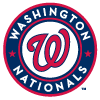 NATIONALS
NATIONALS
This system is extremely poor. Once Victor Robles graduates in April, we could be talking about the worst system in baseball – even with two top-50 prospects still on the farm. That might be a little hyperbolic, but the fifth-best prospect in this system was either going to be a catcher who has not made his full-season debut, a hitter coming off a bad year at Low-A who is recovering from TJS or a pitcher with significant makeup concerns who is also recovering from TJS. Not good. Not good at all.
1. Victor Robles, OF, 21, MLB
Victor Robles had a 4-hit game and accumulated 2 2B, a 3B and 2 HRs in just 5 starts... pic.twitter.com/ng6KMYNHWL
— Washington Nationals (@Nationals) September 27, 2018
Robles is the toughest top-five guy to rank. I see a case for No. 3, 4 or 5. I can see him hitting .270 or .290, and being a 20-steal guy or a 35-steal guy. He should be in the majors all season and has five-category upside, so I don't mind getting aggressive in redraft leagues. Don't be surprised if he is going in the fourth round of NFBC Main Event leagues in late March.
2. Luis Garcia, 2B/SS, 18, High-A
Washington @Nationals prospect & @HagerstownSuns 3B Luis Garcia showing off his two strike approach tonight. #Nats#Nationalspic.twitter.com/YFgWzqTPP9
— NatsGM (@NatsGMdotcom) June 25, 2018
I still don't think enough people realize how ridiculous it is that Garcia even made to High-A last year. But he didn't just get there, he performed 12 percent better than the average Carolina League hitter. He does not have 60-grade power or 70-grade speed, so many people seem to think there is no upside here. However, batting average and runs make up 40 percent of a hitter's value in roto leagues, and Garcia will develop enough power to hit 20 home runs with the speed to steal 20 bases, though perhaps not in the same year.
3. Carter Kieboom, 3B/2B/SS, 21, Double-A
#NationalsCarter Kieboom is having himself a day: 3-for-3, 2B, 2 R pic.twitter.com/TWxPqDQ4Nj
— Emily Waldon (@EmilyCWaldon) October 31, 2018
Kieboom's dynasty-league stock may have peaked in late June when he was promoted to Double-A. Since then, he has struggled to hit for power. He still projects to be an everyday player who is universally owned in fantasy, but he may only hit .260 if he sells out for 20-plus-homer power.
4. Mason Denaburg, RHP, 19, Low-A
At full health as a high schooler, Denaburg flashed top-of-the-rotation upside. After signing, however, his stuff was more in line with what we would expect from a prep pitcher with a mid-rotation ceiling. If the stuff bounces back in his first full season as a pro, he could really shoot up lists.
5. Israel Pineda, C, 18, Low-A
Pineda has some similarities to Ronaldo Hernandez, as he has a ways to go defensively but has a pull-heavy approach that could lead to 20-plus homer pop. Catchers are typically a year or two behind other position players, but the Nationals have promoted Pineda aggressively, setting him up to spend his entire age-19 season at Low-A.
6. Yasel Antuna, 3B/2B/SS, 19, Recovering from TJS (August 2018)
Antuna's numbers at Low-A undersell his talent and upside, but his lack of performance and the fact he is going to miss the first half of the season recovering from TJS makes him someone I'd throw back in most formats. I'm guessing he will struggle again this year, but he has the potential to be a post-hype sleeper in 2020.
7. Seth Romero, LHP, 22, Recovering from TJS (September 2018)
There is not much doubt regarding Romero's talent. He could be a No. 2 starter. However, he fell to Washington with the 25th pick in the 2017 draft due largely to significant makeup concerns that manifested in him getting suspended by the Nationals last spring. He finally debuted at Low-A in June but made just seven starts before tearing his UCL. He won't pitch in 2019 but could be a big riser in 2020.
8. Sterling Sharp, RHP, 23, Double-A
Sharp's stuff is better than his minor-league strikeout rates might indicate – his sinker/changeup combo results in an elite groundball rate – and as a 6-foot-4, 185-pound pitcher from a cold climate, he is more projectable than his age would typically indicate. The most likely scenario is that Sharp ends up being a back-end starter, but be on the lookout for an increased strikeout rate that could portend a more glowing outlook.
9. Telmito Agustin, OF, 22, Double-A
Agustin is a left fielder who can really hit, but who lacks notable speed and logged a .151 ISO at High-A last year. He could make it if the hit tool maxes out and he finds a way to hit 20 homers, but anything less than that and he will be a bench bat or up-and-down fifth outfielder.
10. Wil Crowe, RHP, 24, Double-A
Crowe, a 6-foot-2, 240-pound righty, is a likely back-end starter, but has enough going for him that he could possibly beat that projection. He had Tommy John surgery back in college, so 2018 served as somewhat as a "get back to normal" year. With four average to above-average pitches and passable command, he can turn a lineup over multiple times, but probably won't ever post high strikeout rates.
11. Tim Cate, LHP, 21, High-A
Cate received just under $1 million when the Nationals selected him with the 65th overall pick in 2018. A six-foot lefty, Cate's bread and butter is a double-plus curveball. His fastball only has average velocity (low-90s) and his changeup is still a work in progress. If his changeup improves, he could be a No. 3 starter.
12. Malvin Pena, RHP, 21, High-A
Pena was a little old to be pitching at Low-A last year, due largely to the fact he underwent Tommy John surgery a few years ago when he was at rookie ball. He has a mid-90s fastball but his secondary offerings have been inconsistent. He dealt with an oblique injury last year and will need to show he can hold up over a full season.

















